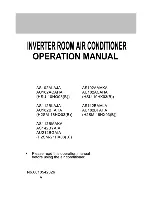
Setting Up
4-62
9161-A2-GH30-20
September 1997
Table 4-12.
Alarm Options (3 of 3)
System Alarm Relay
Possible Settings: Enable, Disable
Default Setting: Disable
Specifies whether an alarm condition for the T1 access unit will activate the system
alarm relay. The alarm relay is deactivated when the condition causing the alarm is
corrected. If more than one alarm condition is present, the alarm relay remains active
until all alarm conditions are cleared for that T1 access unit. You can also deactivate an
alarm via the System Alarm Relay Cut-Off selection from the Control menu.
System Alarm Relay only appears if the NAM is installed in a 5-slot housing.
Alarm conditions are:
Power supply alarm.
Continuous Loss of Signal (LOS) condition at either the Network or DSX-1
interface.
Continuous Out of Frame (OOF) condition at either the Network or DSX-1
interface.
Yellow alarm on either the Network or DSX-1 interface.
Continuous Out of Frame (OOF) condition at any synchronous data port that has
the EDL set to Enable.
Alarm Indication Signal (AIS) received at either the Network or DSX-1 interface.
Excessive Error Rate (EER) detected at the Network interface.
Excessive Error Rate (EER) detected at any synchronous data port that has
Embedded Data Link set to Enable (see Table 4-3).
Primary or Secondary Clock Failure.
Failure of an APM.
An APM is inserted that does not match the configuration.
Enable – Activates alarm conditions on the system alarm relay when an alarm condition
occurs.
Disable – Does not activate alarm conditions on the system alarm relay when an alarm
condition occurs.
















































